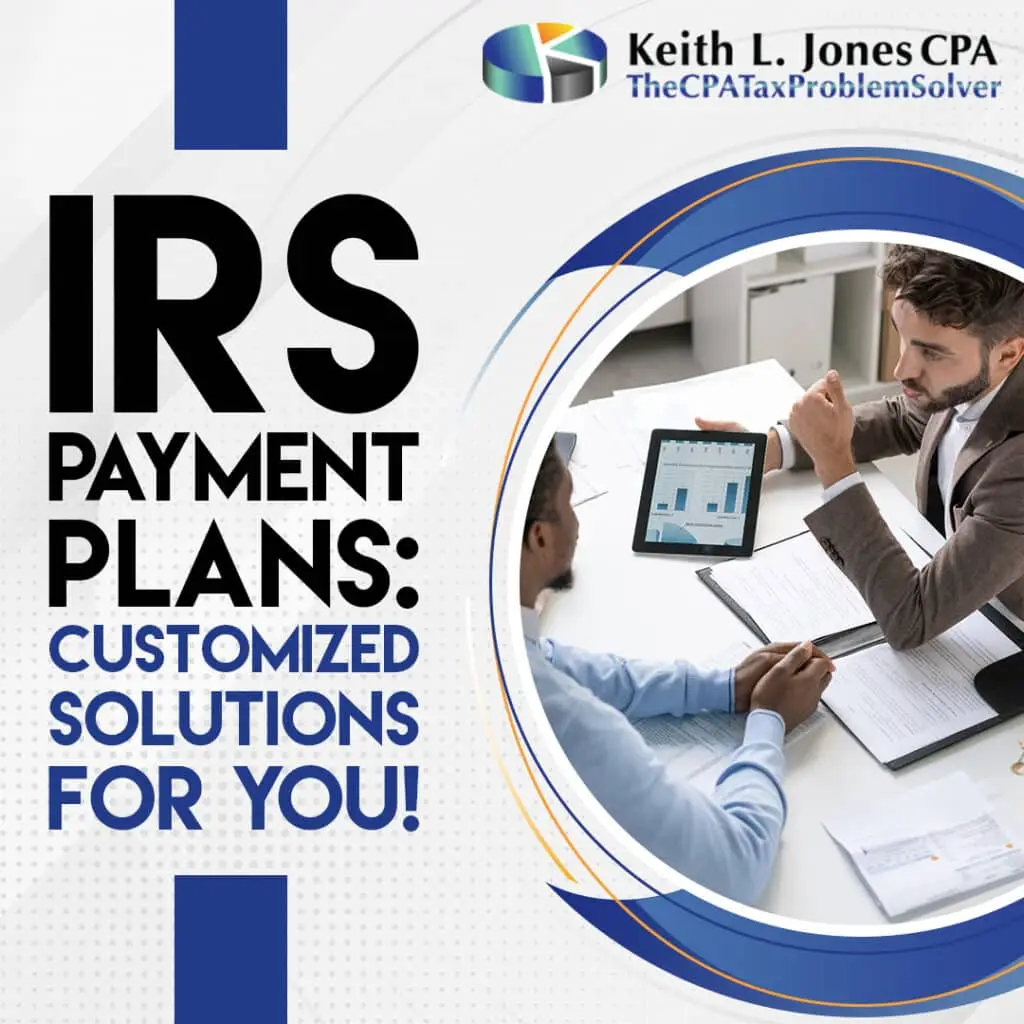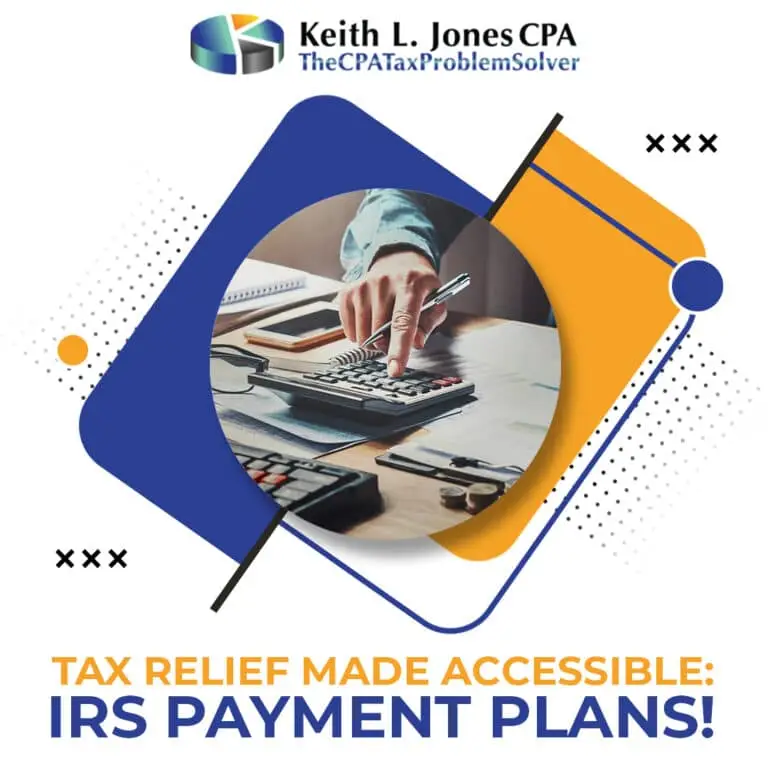There are several IRS tax relief programs that give more taxpayers their financial freedom. In this post, I go over five of those programs.

IRS Payment Plan: A Step-by-Step Guide
Are you looking to establish an IRS payment plan with confidence and ease?
Look no further! This clear and straightforward guide will take you through the process step by step. It will help you meet your financial obligations and give you peace of mind.
In our latest article, you will discover how these plans can help you manage tax debts. They can also provide financial stability.
We will explore the basics of IRS payment plans. This includes the types available, who can qualify, and how to start one with the IRS.
Discover the advantages, such as reduced penalties and manageable monthly installments, offering the financial breathing room you need.
With Keith’s expert advice, you will learn negotiation tactics. These tactics will help you find a payment plan that fits your budget. This is useful for both business owners and individuals who want to settle tax debts.
Dive into our comprehensive guide and start your journey toward tax relief and financial peace.
Guide to Establishing an IRS Payment Plan
Managing tax debts can feel overwhelming. However, an IRS payment plan provides a clear way to pay what you owe. This plan helps you settle your debts while keeping your finances stable. This guide will take you through the process step-by-step. It will help you understand your options and how to start a payment plan with confidence.
Understanding IRS Payment Plans
1. Types of IRS Payment Plans:
- Installment Agreement: This allows you to pay off your tax debt in monthly installments over time. There are different types based on the amount owed and your financial situation.
- If you can’t pay your full tax debt, you can use a Partial Payment Installment Agreement (PPIA). This allows you to make smaller monthly payments.
- Streamlined Installment Agreement: This option is for taxpayers who owe $50,000 or less in total tax, penalties, and interest. They must be able to pay off the debt within 72 months.
2. Who Qualifies:
- People and businesses that owe $10,000 or less in taxes, penalties, and interest can get a guaranteed installment agreement. They must meet certain conditions to qualify. This is true if they meet certain conditions.
- For larger debts or more complex financial situations, qualification depends on factors like income, expenses, and assets.
Initiating an IRS Payment Plan
1. Gather the necessary information:
- Collect details about your tax debt, including the amount owed and tax years involved.
- Prepare financial information, such as income, expenses, and assets to determine your ability to pay.
2. Ways to Apply:
- IRS Payment Plan Online: Use the IRS Online Payment Agreement tool for a streamlined application process.
- By Mail: Complete Form 9465, Installment Agreement Request, and mail it to the IRS along with your financial information.
- Through a Tax Professional: Consider consulting with a tax professional for guidance and assistance in negotiating favorable terms.
3. Negotiation and Approval:
- Be prepared to negotiate terms such as monthly payment amount and duration.
- The IRS may request additional information or adjustments to the proposed plan before approval.
- Once approved, adhere strictly to the terms of the agreement to avoid default.
Advantages of IRS Payment Plans
1. Lower Penalties: If you join a payment plan, you might get lower penalties. However, interest will still add up on the unpaid balance.
2. Manageable Monthly Payments:
- Payment plans allow you to spread out your tax payments over time, making it easier to manage your cash flow.
- Choose a monthly payment amount that fits your budget, considering your income and essential expenses.
3. Financial Breathing Room:
- Show your commitment to paying your tax debt by setting up a payment plan. This can help you avoid immediate collection actions like liens, levies, or wage garnishments.
- Gain peace of mind knowing you’re actively addressing your tax obligations in a structured manner.
Expert Insights and Negotiation Tactics
1. Consultation with Tax Professionals:
- Tax experts like Keith Jones, CPA, can offer valuable advice. They can help you understand the details of IRS payment plans.
- They can advise on optimal negotiation tactics to secure a favorable payment plan that aligns with your financial capabilities.
2. Long-Term Financial Planning:
- Take the chance to look at your overall financial situation. Think about long-term tax planning strategies to reduce future tax bills.
Conclusion
Establishing an IRS payment plan is a proactive step toward resolving tax debts and achieving financial peace. Knowing the process and options is important for everyone. This applies to both individuals and business owners. It helps you take charge of your financial future. Talk to tax professionals and use available resources. This will help you follow the rules and get the most from an IRS payment plan.
Contact Keith Jones, CPA, today and discover the peace of mind that comes with having an experienced guide by your side.
Expertise
Partnering with Keith Jones CPA: Embrace the Advantages with Confidence
Get personalized advice from a certified CPA. They have years of experience with tax issues and working with the IRS. Work with Keith to create a payment plan that suits your budget and situation. This will give you the financial space and stability you need. Keith handles all the complex interactions with the IRS, making the payment plan process stress-free and hassle-free for you. Keith has a strong history of getting good results for his clients. You can trust that your financial future is in expert hands. At Keith L. Jones, CPA, clients come first. You can expect transparent communication, comprehensive support, and a dedicated guide every step of the way.



